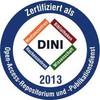PDF, English
 Restricted access: Repository staff only until 7 October 2026. Restricted access: Repository staff only until 7 October 2026.
Login+Download (13MB) | Terms of use |
Abstract
Dormant leukemic stem cells (LSCs) have been recognized as key drivers of disease maintenance, therapy evasion, and late relapse in hematological malignancies. However, due to the absence of appropriate models to study stem cell dormancy in vivo, our understanding of this state—and the development of strategies to eliminate primitive, quiescent LSCs—remains limited. In myeloproliferative neoplasms (MPNs), the existence of dormant mutant hematopoietic stem cells (HSCs) has been hypothesized based on the differential clinical responses to JAK2 inhibitors and interferon-alpha (IFN-α). Additionally, the chronic nature of MPNs suggests that a pool of highly potent mutant HSCs must enact preservation mechanisms, such as dormancy, to sustain disease over decades in patients. In this dissertation, I present the first transgenic mouse model that enables the reliable identification and prospective isolation of deeply dormant JAK2V617F-mutant HSCs (dHSCs). Leveraging this in vivo platform, I demonstrated that dHSCs are the exclusive propagators of disease and are resistant to standard therapies. Furthermore, I investigated both cell-intrinsic and cell-extrinsic mechanisms that may regulate their dormancy program. Long-term in vivo label-retention assays revealed the existence of a rare population of mutant HSCs that remain deeply dormant for up to five months, despite harboring the constitutively active JAK2V617F mutation. Functional transplantation experiments showed that only dHSCs are capable of propagating the polycythemia vera (PV) phenotype. Therapeutic treatment of PV mice with Fedratinib (FED), a JAK2 inhibitor, failed to eliminate dHSCs, whereas pegylated IFN-α significantly reduced their numbers—consistent with clinical observations where IFN-α, but not JAK2 inhibitors, induces molecular remissions in MPN patients. Importantly, transplantation of residual dHSCs post-treatment confirmed their unique capacity to reinitiate disease, supporting their role as disease-propagating cells and indicating that dHSC depletion could serve as a biomarker for therapeutic success. Given the clinical limitations of IFN-α due to toxicity, I evaluated the use of low-dose IFN-α (IFNα-LD) alone and in combination with FED. While IFNα-LD alone had no significant effect, the combination therapy led to a synergistic depletion of dHSCs and correction of disease phenotype, suggesting that IFNα-LD may sensitize dHSCs to JAK2 inhibition by inducing proliferation or altering signaling dependency. 1 Finally, I explored the regulatory mechanisms underlying dormancy in mutant HSCs. Despite active JAK2/STAT5 signaling, transcriptomic and epigenomic profiling revealed that dHSCs display a unique molecular signature distinct from both cycling mutant HSCs and wild-type dormant HSCs. This “mutant-specific” dormancy program may reflect an adaptive mechanism that balances oncogenic signaling with long-term stem cell preservation. Additionally, spatial localization studies identified a novel association between dHSCs and dysplastic megakaryocytes, suggesting that the MPN bone marrow niche may contribute to dormancy maintenance through cell–cell interactions or cytokine-mediated signaling. Altogether, this work provides the first formal demonstration of deeply dormant, disease-propagating mutant HSCs in MPNs and highlights their central role in therapy resistance and disease persistence. By elucidating both intrinsic and extrinsic regulators of dormancy, and through the development of a novel transgenic model, this dissertation establishes a foundational platform for targeting dormant LSCs—not only in MPNs but potentially across other hematological malignancies.
| Document type: | Dissertation |
|---|---|
| Supervisor: | Milsom, Dr. Michael |
| Place of Publication: | Heidelberg |
| Date of thesis defense: | 21 July 2025 |
| Date Deposited: | 15 Oct 2025 09:03 |
| Date: | 2026 |
| Faculties / Institutes: | The Faculty of Bio Sciences > Dean's Office of the Faculty of Bio Sciences |
| DDC-classification: | 570 Life sciences 610 Medical sciences Medicine |
| Controlled Keywords: | Blutstammzelle, Leukämie, Biologie |









